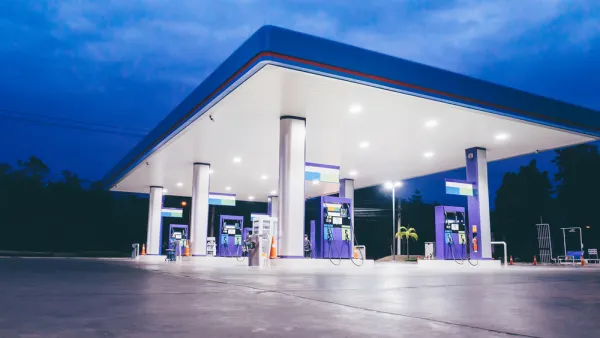National Journal engaged several experts on the state of transportation infrastructure. Both Ken Orski and Rep. Earl Blumenhauer examine different aspects of the 'Infrastructure Deficit". What can we expect to see in the next four years?
Innovations Briefs publisher, Ken Orski assesses where transportation infrastructure ranks not only among the candidates but also with the public. In short, there is no infrastructure crisis in the public's eyes - so don't expect to see additional expenditures for new investment other than from the increased Transportation Infrastructure Finance and Innovation Act (TIFIA) Program funding.
"The absence of transportation in the political dialogue has surprised and disappointed transportation advocates", he writes.
Orski refers to a Oct. 31, 2011 Washington Post opinion by Charles Lane that shows that "people see no signs of 'crumbling infrastructure.' They trust their own eyes more than they trust the unverified claims of the experts ---and what they see is highways and transit networks that are well maintained and functioning smoothly and reliably in most of the places most of the time."
"As one senior congressional aide confided to us, "I don't see our constituents lobbying to raise the gas tax in order to spend more money on transportation."
"The bottom line: regardless of the outcome of the November elections, do not expect a boost in federal transportation spending. Instead, look for a shift from funding to financing ---shift fueled by vastly expanded TIFIA lending authority (by more than 600 percent, from $122 million in FY 2012 to $750 million in FY 2013) and by large amounts of accumulated equity in pension funds and private infrastructure investment funds, numbering some 140 at the latest count."
In the same compilation of responses to the question on "Scaling Back on Infrastructure" posed by correspondent Fawn Johnson, Oregon Rep. Earl Blumenauer paints a more optimistic picture.
"Unlike the contentious issues that dominate the airwaves like taxation, defense, and healthcare, investments in rebuilding and renewing America's infrastructure have broad, bipartisan support with the general public and, until recently, in Congress as well", Blumenauer writes.
While the Representative doesn't identify potential new sources of federal transportation funding, he takes note of the public's willingness to invest in transportation infrastructure for their communities.
"Communities across America are investing local resources in infrastructure, with more than 85% of local transportation ballot measures succeeding so far in 2012, according to the Center for Transportation Excellence."
Thanks to Ken Orski
FULL STORY: Transportation Infrastructure in the Post MAP-21 Era

Analysis: Cybertruck Fatality Rate Far Exceeds That of Ford Pinto
The Tesla Cybertruck was recalled seven times last year.

National Parks Layoffs Will Cause Communities to Lose Billions
Thousands of essential park workers were laid off this week, just before the busy spring break season.

Retro-silient?: America’s First “Eco-burb,” The Woodlands Turns 50
A master-planned community north of Houston offers lessons on green infrastructure and resilient design, but falls short of its founder’s lofty affordability and walkability goals.

Test News Post 1
This is a summary

Analysis: Cybertruck Fatality Rate Far Exceeds That of Ford Pinto
The Tesla Cybertruck was recalled seven times last year.

Test News Headline 46
Test for the image on the front page.
Urban Design for Planners 1: Software Tools
This six-course series explores essential urban design concepts using open source software and equips planners with the tools they need to participate fully in the urban design process.
Planning for Universal Design
Learn the tools for implementing Universal Design in planning regulations.
EMC Planning Group, Inc.
Planetizen
Planetizen
Mpact (formerly Rail~Volution)
Great Falls Development Authority, Inc.
HUDs Office of Policy Development and Research
NYU Wagner Graduate School of Public Service




























